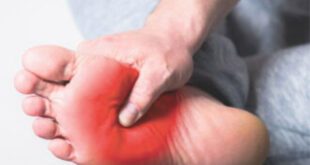 Most Americans know that heart disease and cancer can be silent killers and understand that monitoring blood pressure and cholesterol and having regular mammograms are critical to protecting their health. Too few adults—and not enough doctors—realize, however, that chronic kidney disease (CKD) is another common, life-threatening illness that often goes undetected until very advanced when it could be diagnosed early through simple tests.
Most Americans know that heart disease and cancer can be silent killers and understand that monitoring blood pressure and cholesterol and having regular mammograms are critical to protecting their health. Too few adults—and not enough doctors—realize, however, that chronic kidney disease (CKD) is another common, life-threatening illness that often goes undetected until very advanced when it could be diagnosed early through simple tests.Recent studies report that 26 million Americans suffer from CKD and millions more are at risk. Worse, today’s epidemics of diabetes and obesity could contribute to even higher rates of CKD in the future. Undiagnosed and untreated, CKD can lead to serious health problems including kidney failure (end-stage renal disease). Caught early, it can often be managed, and kidney damage can be slowed or stopped. That’s why early testing for people at risk is so important.
What causes Chronic
Kidney Disease?
The two main causes of chronic kidney disease are diabetes and high blood pressure, which are responsible for up to two-thirds of the cases. Diabetes happens when your blood sugar is too high, causing damage to many organs in your body, including the kidneys and heart, as well as blood vessels, nerves and eyes. High blood pressure, or hypertension, occurs when the pressure of your blood against the walls of your blood vessels increases. If uncontrolled, or poorly controlled, high blood pressure can be a leading cause of heart attacks, strokes and chronic kidney disease. Also, chronic kidney disease can cause high blood pressure.
What are the symptoms of CKD?
Most people may not have any severe symptoms until their kidney disease is advanced. However, you may notice that you:
• feel more tired and have less energy
• have trouble concentrating
• have a poor appetite
• have trouble sleeping
• have muscle cramping at night
• have swollen feet and ankles
• have puffiness around your eyes, especially in the morning
• have dry, itchy skin
• need to urinate more often, especially at night.
4 Main Risk Factors for Kidney Disease:
• Diabetes (self or family)
• High blood pressure (self or family)
• Cardiovascular disease (self or family)
• Family history of kidney disease or diabetes or
high blood pressure
8 Problems CKD Can Cause:
• Cardiovascular disease
• Heart attack and stroke
• High blood pressure
• Death
• Weak bones
• Nerve damage (neuropathy)
• Kidney failure (end-stage renal disease, or
ESRD)
• Anemia or low red blood cell count
Prevention of CKD
The National Kidney Foundation offers 7 Golden Rules of Prevention to lower your chances of getting kidney disease.
1. Get regular check-ups
You take your car in for a tune-up to make sure it runs smoothly, so why wouldn’t you take care of your body? Your doctor can check for kidney disease with 2 simple tests: a urine test and blood test. A urine test called albumin creatinine ratio (ACR) checks if there is a protein called albumin in your urine. A blood test called glomerular filtration rate (GFR) tells how well your kidneys are working to remove waste from your body.
2. Control Blood Pressure
High blood pressure can damage your kidneys and increase your chances of getting kidney disease. If your blood pressure remains high, your doctor may have you take medicine. Making simple tweaks to your lifestyle, such as cutting back on salt and alcohol, losing excess weight, and exercising can help keep your blood pressure in check.
3. Control Blood Sugar
High blood sugar levels make the kidneys filter too much blood. Over time, this extra work stresses the kidneys and can cause damage. If you have diabetes, the best way to protect your kidneys is to keep your blood sugar well controlled. Your treatment plan may include diet, exercise, and medicine to lower your blood sugar levels.
4. Eat a Healthy Diet
A healthy diet plan, such as the DASH (Dietary Approaches to Stop Hypertension) Diet, can help lower blood pressure and lower your chances of getting heart disease and kidney disease. The DASH eating plan includes fruits, vegetables, fat-free or low-fat milk and milk products, whole grains, fish, poultry, beans, seeds, and nuts. It also has less sodium, sugars, fats, and red meats.
5. Exercise
You’ve heard if before and we’re going to say it again: you must exercise! Exercise can help you keep a healthy weight, control blood pressure and cholesterol, build strength and endurance, and lower your chances of getting diseases such as diabetes, heart disease, and kidney disease. There are many types of exercises that can help you stay healthy including walking, household chores, playing a sport, or aerobic exercise (jogging, swimming, biking, climbing stairs, or hiking).
6. Quit Smoking
By now you should know the many dangers associated with smoking. Smoking causes diseases in every organ of the body, including the kidneys. If you are not able to quit smoking on your own, ask your doctor about treatment options.
7. Do not overuse pain medicines
Using too much pain medicines called NSAIDs (non-steroidal anti-inflammatory drugs such as ibuprofen) may cause kidney disease. Long-term use of NSAIDs, especially at high doses, reduces the blood flow to the kidney which causes harm to kidney tissue. Ask your doctor about other medicine to manage pain, such as acetaminophen.
The kidneys are two fist-sized organs in your lower back. They maintain overall health through the
following functions:
6 Things Healthy Kidneys Do:
. Regulate the body’s fluid levels
. Filter wastes and toxins from the blood
. Release a hormone that regulates blood pressure
. Activate Vitamin D to maintain healthy bones
. Release the hormone that directs production of red blood cells
. Keep blood minerals in balance (sodium, phosphorus, potassium)
Source: kidney.org
 Central Florida Health and Wellness Magazine Health and Wellness Articles of the Villages
Central Florida Health and Wellness Magazine Health and Wellness Articles of the Villages



